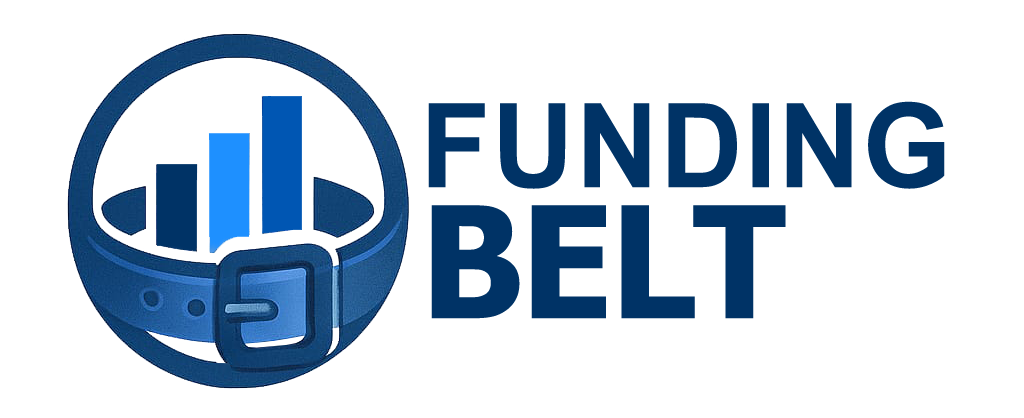Compliance Setup
Introduction to Compliance Setup for Businesses
Navigating the complex terrain of regulatory requirements is essential for every business. Compliance setup refers to the structured process of establishing policies, procedures, and mechanisms that ensure a company adheres to all relevant laws, regulations, and industry standards. Effective compliance setup minimizes risks, protects the business from legal penalties, and promotes operational integrity. Organizations must tailor their compliance frameworks to their specific industries, operational size, and regulatory environment to maintain good standing and foster trust with stakeholders.
Establishing a comprehensive compliance setup involves understanding the intricate requirements that govern different aspects of business operations, including financial reporting, data protection, employment laws, and environmental regulations. By proactively integrating these requirements into business practices, companies avoid costly fines, lawsuits, and reputational damage. Compliance is not just about avoiding penalties; it’s about embedding responsibility into the core functioning of the business, ensuring long-term sustainability.

Happy Clients
Projects Done
Countries
Daily Visitors
Importance of Compliance Setup in Business Growth
Compliance setup is fundamental to healthy business growth. When regulatory frameworks are met rigorously, businesses project an image of reliability and stability to customers, investors, and partners. This builds confidence that can lead to expanded market opportunities, better credit terms, and stronger partnerships. Financial institutions, especially, emphasize compliance diligence when evaluating businesses for funding or credit, making setup an essential precursor to capital acquisition.
Failing to establish a robust compliance infrastructure can hinder operations, leading to frequent audits, legal scrutiny, and operational disruptions. Conversely, a well-integrated compliance program helps streamline processes, facilitates timely reporting, and supports proactive risk management. Organizations can then concentrate on innovation and strategic expansion with the assurance that their operations meet requisite legal frameworks in a fast-changing regulatory landscape.
Strengthening Compliance Through Employee Engagement
Employee involvement is vital to a successful compliance setup. Training programs need to be interactive and relatable, ensuring that every individual understands the importance of compliance and their role in upholding it. Cultivating a culture that rewards ethical behavior and transparency empowers staff to identify and report potential compliance issues without fear of retribution. At Funding Belt, we advocate for ongoing education paired with leadership example-setting to embed compliance deeply within company culture.
Leveraging Technology for Smarter Compliance Solutions
Advancements in technology simplify compliance setup by automating manual tasks, monitoring regulatory changes, and producing timely reports. Software solutions integrated with machine learning algorithms can detect patterns indicative of compliance breaches before they occur. Businesses that invest in these tools not only improve accuracy but also free up resources to focus on strategic priorities. Funding Belt recognizes the importance of such innovations and supports clients in choosing and implementing effective compliance technologies.
The Strategic Advantage of Proactive Compliance
Proactive compliance transforms a perceived burden into a strategic advantage. Companies that thoroughly understand and anticipate regulatory demands operate more confidently, mitigating disruptions before they arise and seizing growth opportunities faster. Relationship building with regulators, transparent reporting, and ethical conduct become assets that attract investors and partners. Funding Belt guides companies in embedding compliance as a core feature of their strategy, ensuring long-term resilience and success.
Key Regulatory Areas for Compliance Setup
Compliance setup spans numerous regulatory arenas, each demanding dedicated attention. Foremost is tax compliance, which requires accurate record-keeping, timely reporting, and payment adherence. Financial compliance encompasses not only tax matters but also accounting standards, anti-money laundering regulations, and accurate financial disclosures. Ensuring compliance in these areas prevents penalties and promotes transparent business dealings.
Data privacy and cybersecurity regulations have become critical areas due to the growing digitalization of business operations. Laws that govern data collection, storage, and sharing must be carefully incorporated into company policies. Employee and labor law compliance ensures fair work conditions, correct employee classification, wage adherence, and safe workplace standards, which protect against costly legal actions and strengthen workforce morale. Environmental regulation compliance may also apply, depending on the nature of business activities, especially in manufacturing or resource extraction sectors.
Steps to Develop an Effective Compliance Setup
Building an effective compliance setup starts with a thorough assessment of applicable laws and industry regulations. This includes reviewing federal, state, and local rules that impact the company’s operations. After this assessment, companies must craft tailored policies and documented procedures that clearly define how the business will meet these requirements. These documents serve as the foundation for compliance enforcement and training.
Assigning responsibility for compliance management is the next critical phase. Large organizations often establish compliance departments or appoint compliance officers to oversee adherence efforts continuously. Smaller enterprises might designate senior management or external consultants to fulfill this function. Implementation also involves training employees on compliance policies and fostering a culture of ethical behavior and accountability.
Technology plays a vital role in compliance setup. Automated systems that monitor processes, flag anomalies, and generate regulatory reports can greatly reduce human error and improve efficiency. Keeping compliance programs updated with changes in the regulatory landscape ensures ongoing adherence and reduces risks of non-compliance over time.

Compliance and Financial Benefits for Businesses
A sound compliance setup brings clear financial benefits beyond avoiding fines. Companies that demonstrate regulatory diligence often enjoy preferential treatment from banks and lenders. Compliance marks businesses as low-risk borrowers, opening doors to better loan terms, increased funding limits, and access to diverse financing options. This financial advantage is a compelling incentive for companies planning to scale or stabilize operations with external capital.
Insurance providers also favor businesses with strong compliance programs, often offering lower premiums for companies less exposed to legal and operational risks. Moreover, investors place a premium on compliance, viewing it as a sign of disciplined management that safeguards shareholder value. Hence, compliance is a strategic asset that contributes directly to financial health and market credibility.
Challenges in Compliance Setup and How to Overcome Them
Compliance setup is not without challenges, especially for smaller businesses with limited resources. One key difficulty is keeping pace with frequently changing laws that vary across jurisdictions. To meet this challenge, companies must invest in ongoing education and maintain access to professional guidance, whether through consultants, legal advisors, or compliance services.
Another challenge is simplifying complex regulatory requirements into practical and accessible policies employees can follow. It requires clear communication, concise documentation, and regular training sessions. Automation and compliance management software can address these difficulties by streamlining workflows and enhancing visibility into compliance status.
Resource constraints can also hamper compliance efforts. Prioritizing compliance areas by risk and impact ensures that critical facets receive adequate attention first. Companies can gradually build out their programs to cover additional requirements as capacity increases. Engaging expert partners can accelerate this process and provide insights tailored to specific industry needs.

Integrating Compliance Setup with Business Strategy
For compliance setup to be sustainable, it must align with the broader business strategy. Companies that consider compliance an integrated function rather than a checkbox exercise benefit from more consistent implementation and better results. Compliance objectives should be tied to operational goals, risk management plans, and corporate governance frameworks.
Strategic integration also involves embedding compliance checkpoints into business processes such as product development, sales, and procurement. When compliance is factored in early, potential issues are mitigated before they escalate. This proactive approach conserves resources and supports smoother scaling endeavors.
Leadership commitment plays an essential role in integration. When executives actively champion compliance, this mindset permeates through the organization, inspiring adherence and reinforcing the importance of regulatory responsibility in daily operations.
The Role of External Partners in Compliance Setup
Many businesses find leveraging external partners indispensable for establishing and maintaining compliance. Legal advisors, industry consultants, and regulatory experts provide up-to-date interpretations and tailor advice specific to the company’s context. These partnerships are especially valuable for navigating complex regulatory environments and managing audits or investigations.
Technology providers offering compliance management platforms can automate monitoring and reporting functions, significantly reducing administrative burdens. Outsourcing compliance functions lets companies tap into specialized expertise without the overhead of maintaining a large internal compliance team.
At Funding Belt, we emphasize the importance of having a robust support system to assist businesses through every phase of their compliance journey. Our expertise in business funding is complemented by extensive knowledge of compliance requirements, which ensures clients meet all legal prerequisites while accessing capital solutions effectively.
Future Trends in Compliance and How to Prepare
Compliance is evolving rapidly with technology, globalization, and regulatory reforms shaping the landscape. Emerging trends include the increased use of artificial intelligence to predict compliance risks and automate decision-making, greater focus on environmental, social, and governance (ESG) compliance, and the growing importance of data privacy laws.
Businesses must adopt a forward-looking approach to compliance setup, investing in agile systems and continuous learning. Staying informed about legislative changes and adopting innovative compliance tools will be critical. Companies that anticipate future regulatory shifts instead of reacting to them will gain a competitive edge.

Continuous Monitoring and Assessment in Compliance
Compliance setup is not a one-time initiative but an ongoing process that demands regular evaluation and updates. As regulations change and business operations expand, companies must continuously monitor and reassess their compliance frameworks to maintain alignment with current standards. Regular audits, both internal and external, ensure that existing measures are effective and that any deficiencies are swiftly corrected. Establishing a reporting mechanism that gathers insights from different departments helps maintain transparency and closes communication gaps. At Funding Belt, we stress the importance of recurring assessments to ensure that compliance remains a living practice rather than a static document.
Building Trust Through Transparent Compliance Practices
Transparency is the foundation of credibility in compliance management. By clearly communicating compliance policies, audit outcomes, and ethical standards to stakeholders, businesses strengthen their reputation and build lasting trust. Transparency also encourages accountability within the organization, as employees understand that compliance is not merely an internal obligation but a public commitment to integrity. Companies that champion open compliance practices attract partners and investors who value responsibility, stability, and consistency. Funding Belt encourages businesses to embrace full transparency as part of their compliance approach, ensuring that integrity enhances every facet of their operations.



